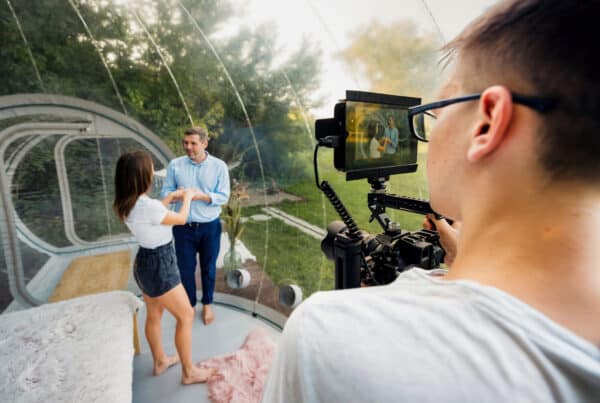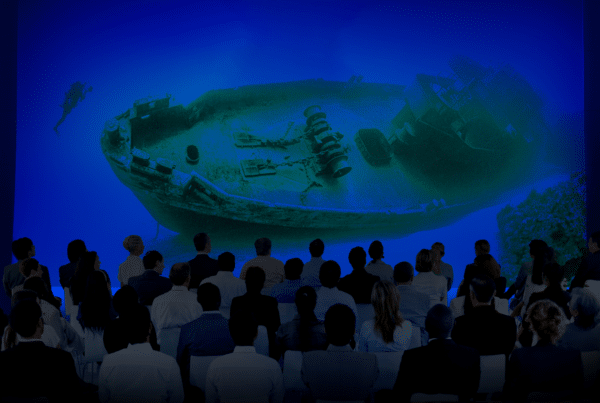Introduction
The digital landscape is evolving rapidly, and one of the most exciting areas of innovation is the development of 360 virtual tours. These immersive experiences have already revolutionized industries such as real estate, tourism, education, and entertainment, offering users an interactive way to explore and engage with environments from the comfort of their own homes. As technology continues to advance, the future of 360 virtual tours promises even greater enhancements and possibilities. This blog post explores the emerging technologies, predictions for the future, and potential industry growth and opportunities in the realm of 360 virtual tours.
Emerging Technologies
VR and AR Integration
Virtual Reality (VR) and Augmented Reality (AR) are at the forefront of technological advancements that are poised to significantly impact 360 virtual tours. These technologies provide enhanced interactivity and immersion, making virtual tours more engaging and realistic.
Virtual Reality (VR)
VR technology offers users a fully immersive experience by transporting them into a completely virtual environment. When integrated with 360 virtual tours, VR allows users to explore spaces as if they were physically present. This is particularly beneficial for industries such as real estate and tourism, where potential buyers or tourists can virtually walk through properties or travel destinations.
Advancements in VR headsets, such as the Oculus Rift, HTC Vive, and PlayStation VR, have made these experiences more accessible and comfortable. The future will likely see even more lightweight and affordable VR headsets, making virtual tours a standard part of marketing and engagement strategies across various industries.
Augmented Reality (AR)
AR overlays digital information onto the real world, enhancing the user’s perception of their environment. In the context of 360 virtual tours, AR can provide additional layers of information and interactivity. For example, while exploring a virtual tour of a historical site, users can see information overlays about significant events, artifacts, or architectural details.
Mobile AR applications, like those available on smartphones and tablets, are becoming increasingly sophisticated. As AR glasses and wearable devices improve, the integration of AR with 360 virtual tours will become even more seamless and impactful.
Advances in Camera Technology
The quality and capabilities of cameras used to capture 360-degree images and videos are continually improving. These advancements are crucial for creating more realistic and immersive virtual tours.
Higher Resolution and Image Quality
Modern 360 cameras are now capable of capturing images and videos in higher resolutions, resulting in more detailed and lifelike virtual tours. Cameras like the Insta360 Pro 2 and the Kandao Obsidian Pro offer 8K and even 12K resolution, ensuring that every detail is captured with stunning clarity.
Improved Low-Light Performance
One of the challenges of 360 photography has been capturing high-quality images in low-light conditions. Advances in sensor technology and image processing algorithms are overcoming these limitations, allowing for better performance in various lighting environments. This is particularly beneficial for indoor tours, such as museums or historical buildings, where lighting can vary significantly.
Enhanced Image Stabilization
Image stabilization technology has also seen significant improvements. Modern 360 cameras come equipped with advanced stabilization features that reduce motion blur and ensure smooth, steady footage. This is essential for creating professional-quality virtual tours that provide a seamless and enjoyable user experience.
Predictions for the Future
Increased Adoption Across Industries
As technology becomes more accessible and user-friendly, the adoption of 360 virtual tours is expected to grow across various industries. Real estate, tourism, education, and entertainment are just the beginning. Industries such as healthcare, retail, and even manufacturing are exploring the potential of virtual tours for training, marketing, and operational efficiency.
Enhanced User Interactivity
The future of 360 virtual tours will likely include even more interactive elements, making the experiences more engaging and informative. Enhanced user interactivity could involve more sophisticated AI-driven chatbots that guide users through the tours, provide real-time information, and answer questions.
Integration with IoT and Smart Devices
The Internet of Things (IoT) is another area that will intersect with 360 virtual tours. Integration with smart devices and IoT technology can provide real-time data and interactive experiences. For example, in a smart home tour, users could interact with smart appliances, adjust lighting, or view energy consumption data directly within the tour.
Industry Growth and Opportunities
Real Estate
The real estate industry has already seen significant benefits from 360 virtual tours, but future advancements will further enhance their value. With VR and AR integration, potential buyers can experience properties more vividly, making it easier to envision themselves living in the space. Virtual staging, where digital furniture and decor are added to empty rooms, will become more realistic and customizable.
Tourism and Travel
The tourism industry will continue to leverage 360 virtual tours to showcase destinations and attract visitors. Future trends may include personalized virtual travel experiences, where users can customize their tours based on interests and preferences. Additionally, as VR travel becomes more popular, virtual tours will serve as a complement to physical travel, offering immersive previews and in-depth exploration of destinations.
Education
In education, 360 virtual tours will play a crucial role in providing immersive learning experiences. Virtual field trips, historical site explorations, and interactive science labs are just a few examples of how this technology can enhance education. As VR and AR devices become more affordable, their integration into classrooms will become more widespread, providing students with engaging and interactive learning opportunities.
Healthcare
The healthcare industry is exploring the use of 360 virtual tours for training and patient care. Medical students can benefit from virtual anatomy tours and simulated surgeries, providing hands-on experience without the risks associated with real procedures. Patients, on the other hand, can use virtual tours to familiarize themselves with medical facilities, reducing anxiety before treatments or surgeries.
Retail
Retailers are also tapping into the potential of 360 virtual tours to enhance the shopping experience. Virtual store tours allow customers to explore products in detail, providing a more immersive and interactive online shopping experience. As AR technology advances, customers will be able to virtually try on clothes, visualize furniture in their homes, and more.
Future Applications and Use Cases
Training and Simulation
One of the most promising applications of 360 virtual tours is in training and simulation. Industries such as aviation, military, and emergency services can use virtual tours to create realistic training environments. Trainees can practice procedures and scenarios in a safe, controlled virtual setting, improving their skills and readiness for real-world situations.
Event Planning and Venue Tours
Event planners can use 360 virtual tours to showcase venues to clients, providing a comprehensive view of the space without the need for physical visits. Clients can explore different setups and configurations, helping them make informed decisions about event planning. As VR technology improves, clients will be able to experience events virtually, previewing everything from decor to lighting and sound.
Cultural Preservation
Cultural preservation is another area where 360 virtual tours can make a significant impact. By creating virtual replicas of historical sites, artifacts, and cultural landmarks, we can preserve and share our heritage with future generations. These virtual tours can provide educational resources and raise awareness about the importance of preserving our cultural heritage.
Architecture and Design
Architects and designers can use 360 virtual tours to present their designs to clients and stakeholders. Virtual walkthroughs of architectural plans allow clients to experience the space before construction begins, providing valuable feedback and ensuring that the final product meets their expectations. This technology can also facilitate remote collaboration among design teams.
Social Experiences
As social VR platforms evolve, 360 virtual tours will become a part of shared virtual experiences. Friends and family can explore virtual spaces together, attend virtual events, or even travel to distant places without leaving their homes. These social experiences will become more immersive and engaging, bridging the gap between physical and virtual interactions.
Summary and Key Takeaways
Summary
The future of 360 virtual tours is bright, with numerous emerging technologies and innovations set to enhance their capabilities and applications. VR and AR integration will provide more immersive and interactive experiences, while advances in camera technology will improve the quality and accessibility of 360 content. The adoption of 360 virtual tours will continue to grow across various industries, offering new opportunities for marketing, education, training, and entertainment. Future applications will include personalized virtual travel, interactive educational experiences, advanced training simulations, and much more.
Key Takeaways
- VR and AR Integration: The integration of VR and AR will enhance the interactivity and immersion of 360 virtual tours, making them more engaging and realistic.
- Advances in Camera Technology: Higher resolution, improved low-light performance, and enhanced image stabilization will lead to better quality 360 content.
- Increased Adoption: The use of 360 virtual tours will expand across industries such as real estate, tourism, education, healthcare, and retail, providing new opportunities for growth and innovation.
- Enhanced User Interactivity: Future virtual tours will feature more interactive elements, including AI-driven chatbots, IoT integration, and personalized experiences.
- Diverse Applications: Emerging applications of 360 virtual tours will include training and simulation, event planning, cultural preservation, architecture and design, and social experiences.
Conclusion
As technology continues to evolve, the potential of 360 virtual tours will only expand, offering new and exciting possibilities for various industries. By staying informed about emerging trends and innovations, businesses and creators can leverage 360 virtual tours to provide immersive, engaging experiences that captivate and inspire their audiences. The future of 360 virtual tours is not just about exploring new places; it’s about transforming how we interact with and experience the world around us.
Stay ahead with the latest trends and innovations in 360 virtual tours.
Enhance your business and captivate your audience with cutting-edge technology. Contact us today to explore how our expert solutions can revolutionize your virtual presence. Reach out now to start transforming your engagement and visibility with 360 virtual tours!


